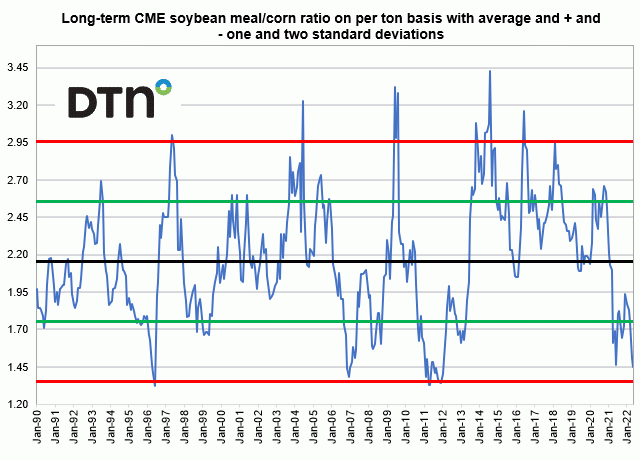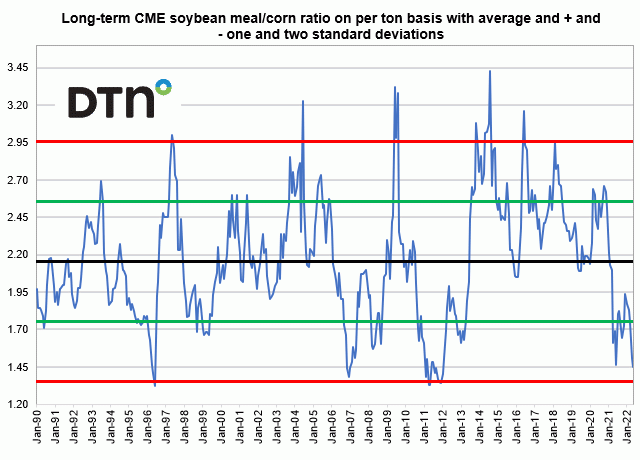Fundamentally Speaking
May WASDE Old Crop Corn Stocks-to-Use Lowest in 7 Years
Last week's USDA May WASDE report confirmed that the tight corn supply situation will be with us for a while though their initial figures for the new marketing year suggest a slightly more relaxed scenario.
With ending stocks pared by 95 million bushels (mb) to 1.257 billion bushels (bb), the 2020/21 (old crop) corn stocks-to-use ratio is now down to 8.5%, the lowest May WASDE stocks-to-use ratio since the 2014/15 season.
The USDA's first new crop corn stocks-to-use ratio came in at 10.2% and that is the lowest new crop corn May WASDE ratio in ten years, though above this year's level.
What will be the situation in a few months, let's say when the USDA releases its November 2021 WASDE, six months down the road?
P[L1] D[0x0] M[300x250] OOP[F] ADUNIT[] T[]
By that point we will have a better idea of how demand for the rest of this marketing year held up in the face of what are now the highest corn prices since 2013.
By then the trade also will have a pretty good fix in the size of this year's crop which is just getting done seeded as that will have a huge bearing on total supplies, forecasted consumption and of course price direction.
This graphic shows the USDA's old and new crop U.S. corn stocks-to-use ratios in the May WASDE report on the left-hand axis vs. the change in both the old and new crop U.S. corn stocks-to-use ratios from the May to November WASDE reports on the right-hand axis.
For old crop there is not usually much of change in the stocks-to-use ratio for the May to November reports as demand at that point has been locked in for 8 of the 12 months of the marketing year.
We surmise that the makings of a good crop probably results in the lowering of the old crop stocks-to-use ratio from May to November as that is usually a price negative factor that would encourage perhaps a slight increase in old crop demand.
Conversely, if the new crop outlook is poor, that usually results in higher prices suppressing demand that would result in a higher stocks-to-use ratio in November than in May.
The change in the new crop stocks-to-use ratio from May to November hinges even more on the new crop outlook.
Last year in 2020 this year's stocks-to-use ratio fell from 22.4% in May 2020 to 11.5% by November, a drop of 10.9% based on the huge decline in the estimate of the 2020 U.S. corn crop between May and November and the surprisingly high surge in demand even with the ultimate rise in prices, based mostly in large exports to China.
The only larger May to Nov new crop stocks-to-use ratio decline was in 1993 linked to large late season declines in that year's corn crop due to widespread flooding conditions.
For end-users the hope is that we see a year like 2004 where in May 2004 the USDA pegged the 2004-05 corn stocks to use ratio at 7.1%, far lower than this year's initial forecast, but a monster 2004 corn crop resulted in the November 2004 estimate of the 2005/05 stocks to use coming in at 16.7%, a huge 9.6% increase.
(c) Copyright 2021 DTN, LLC. All rights reserved.






Comments
To comment, please Log In or Join our Community .